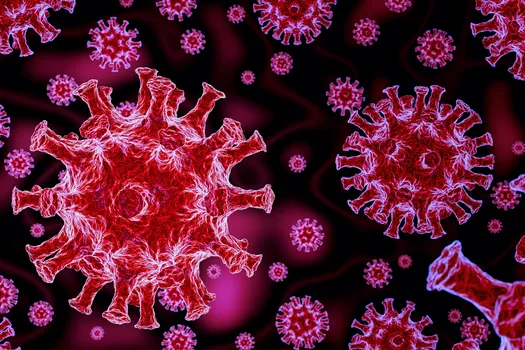
COVID-19 Virus Found in Stool May Be Infectious
by Brenda Goodman, MAMay 27, 2020 -- A new study has shown that COVID-19 virus isolated from the stool of a sick patient can infect cells in a petri dish.
The research is a step toward proving a new route of transmission for the infection. If confirmed by future studies, it would mean that people could get sick by ingesting tiny amounts of stool from others who are infected -- called the fecal-oral route of transmission. Other diarrhea diseases that pass from person to person this way include cholera and hepatitis.
It also raises the question of whether infectious virus can be blown into the air -- or aerosolized -- by a flushing toilet.
“The world is covered in a thin veneer of stool,” says David Brett-Major, MD, an infectious disease specialist at the University of Nebraska Medical Center, referring to studies that have found bacteria from stool on nearly everything we touch daily -- from computer keyboards to the soles of our shoes to our clothes.
“Stool tends to get everywhere, so regular hand-washing is important,” he says.
Gastrointestinal symptoms -- nausea and diarrhea -- are common in patients who catch COVID-19. Previous studies have shown that about half of COVID-19 patients have the virus in their stool. Traces of the virus seem to remain in stool long after the virus can no longer be detected in nose and throat swabs.
Brett-Major and his colleagues sampled the rooms of people who were hospitalized for COVID-19 and those who tested positive and had no or only minor symptoms and were in quarantine at a different location.
It’s one of the reasons the CDC recommends giving a sick family member their own bathroom to use, if at all possible.
But Brett-Major’s study and others like it have only reported finding genetic material from the virus. They could not tell if any of the viral material they’d found could actually make anyone sick.
For that, scientists have to go a step further. They mix a solution of the virus with cells to see if the virus infects the cells and kills them.
Scientists in China who performed this test with virus they isolated from the stool of a COVID-19 patient found that it could infect living cells. When they looked at infected cells under an electron microscope, they could see the cells releasing viral particles that were presumably ready to go infect more cells, highlighting the potential for the disease to spread this way.
The researchers also determined there was about 100 times more virus in stool than in samples taken from the patients’ mouth and nose.
“The question really becomes how big is this, right? And how much does it matter in the grand scheme of things,” says Barun Mathema, PhD, an infectious disease epidemiologist at Columbia University in New York City.
Right now, that’s still a big unknown. The study sampled virus from the stool of very sick patients. There’s no way to know whether people with milder infections would generate as much of the virus or shed it as heavily. The study also used an experimental system -- scientists put cells and the virus together in the same petri dish to see what would happen. For that reason, it doesn’t reflect real-world transmission.
Still, Mathema says that in certain settings, the virus in stool could be an important factor in the spread of the disease.
“There will probably be multiple routes” of transmission, he says.
Right now, he says, “We certainly don’t think it is a major route.”
Currently, virus that’s released into the air from coughs and sneezes is thought to be the biggest driver of spread. Contact with contaminated surfaces, called fomite transmission, may also be playing a role.
Until more is known, Mathema says it’s not a bad idea to be careful in shared bathrooms, closing the lid on the toilet before you flush when you can to cut down on the creation of toilet plume aerosols.
“There is, for sure, a lot of aerosolization going on with flushing. Lids, it turns out, are very important,” he says.
Finally, the CDC says it’s critical to wash your hands for at least 20 seconds after going to the bathroom, changing a baby’s diaper, or helping an older child in the bathroom.